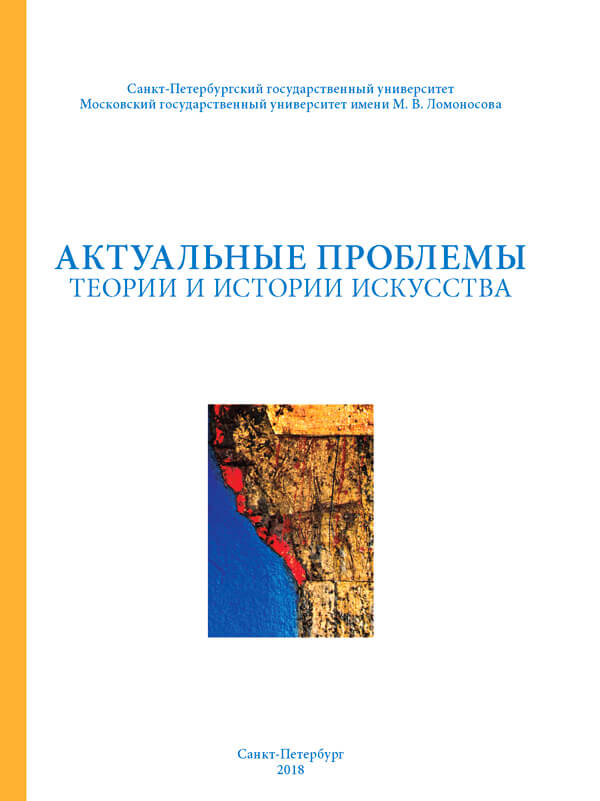Invisible Avant-Garde and Absent Revolution: Walter Benjamin’s New Optics for Moscow Urban Space of the 1920s
DOI:
https://doi.org/10.18688/aa188-6-56Keywords:
Walter Benjamin, Russian Revolution, Moscow, Avant-garde, constructivism, living space, new barbarism, modernist architecture, urban historyAbstract
Walter Benjamin spent the fall and winter of 1926-1927 in Moscow. His experience and observations were recorded in “Moscow Diary” and essay “Moscow” (1927). In the present paper, the author refers to the latter text, in which Benjamin reflected on the space of Soviet capital that was undergoing severe transition. Without even mentioning Avant-garde architecture that was being constructed in his presence and that was transforming the living space of the new state on all levels, Benjamin left deep analyses of Moscow’s post-revolutionary urban constitution, revealed its nature, and predicted its future.Walter Benjamin spent the fall and winter of 1926-1927 in Moscow. His experience and observations were recorded in “Moscow Diary” and essay “Moscow” (1927). In the present paper, the author refers to the latter text, in which Benjamin reflected on the space of Soviet capital that was undergoing severe transition. Without even mentioning Avant-garde architecture that was being constructed in his presence and that was transforming the living space of the new state on all levels, Benjamin left deep analyses of Moscow’s post-revolutionary urban constitution, revealed its nature, and predicted its future.
Benjamin came to Moscow to observe the Revolution in action, but could not find it. Instead, he saw Constructivism as already dismissed. While recording those huge transformations that he witnessed during his stay, Benjamin had not described them either in terms of new functionalist architecture, or through the reflection on demolition of Empire’s architectural symbols. He turned to other features and spatial dimensions that were not directly related to any particular architecture, such as mobility, rhythm, aura and through which he fully revealed reformation of Moscow space that was initiated by functionalists and supported by the new regime.
References
Benjamin W. Moskauer Tagebuch. Frankfurt, Suhrkamp Verlag Publ., 1980. 220 p. (in German).
Benjamin W. Moscow Diary. Harvard, Harvard University Press Publ., 1986. 156 p.
Benjamin W. The Arcades Project. Cambridge, The Belknapp Press of Harvard University Press Publ., 1999. 1098 p.
Benjamin W. Moscow. Benjamin W. Selected Writings. Vol. 2. 1927-1940. Harvard, Harvard Univ. Press Publ., 1999, p. 22-46.
Benjamin W. Experience and Poverty. Benjamin W. Selected Writings. Vol. 2. 1927-1940. Harvard, Harvard University Press Publ., 1999, pp. 731-736.
Benjamin W. Reflections: Essays, Aphorisms, Autobiographical Writings. New York, HBJ Publ., 1978. 348 p.
Bowlt J. Russian Art of Avant-Garde: Theories and Criticism 1902-1934 (Documents of Twentieth-Century Art). London, Thames & Hudson Publ., 1988. 371 p.
Boym S. Common Places: Mythologies of Everyday Life in Russia. Cambridge, Harvard University Press Publ., 1995. 384 p.
Cooke C. Russian Avante-Garde: Theories of Art, Architecture, the City. New York, St. Martins Press Publ., 1995. 144 p.
Clark K. Moscow, the Fourth Rome: Stalinism, Cosmopolitanism and the Evolution of Soviet Culture, 1931¬1941. Cambridge, Harvard University Press Publ., 2011. 432 p.
Ginsburg M. Stil’ i Epokha / Style and Epoch. Moscow. Gosudarstvennoe Izdatel’stvo, 1924. 238 p.
Heynen H. Architecture and Modernity. Cambridge, MIT Press Publ., 1999. 276 p.
Kiaer C. Imagine No Possessions. Cambridge, MIT Press Publ., 2005. 326 p.
Lefebvre H. The Production of Space. Hoboken, Wiley-Blackwell Publ., 1992. 464 p.
Mejerovich M. Gradostroitelnaia politika v SSSR (1917-1929). Ot goroda-sada k vedomstvennomu rabochemu posyolku (The City-Building Policy in the USSR (1917-1929). From the Garden City to the Departmental Workers’ Village). Moscow, NLO, 2017. 352 p. (in Russian).
Roman G.; Marquardt V. (eds.). Avant-Garde Frontier: Russia Meets the West 1920-1930. Gainesville, University Press of Florida Publ., 1992. 312 p.
Wellek R. Benjamin’s Diary. The New Criterion, 1986, vol. 5, no. 3, p. 83.


